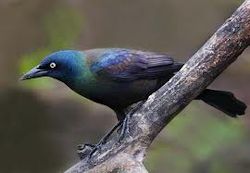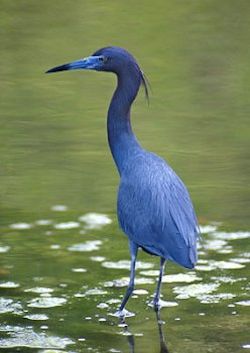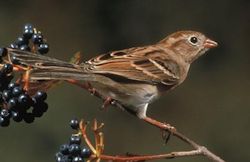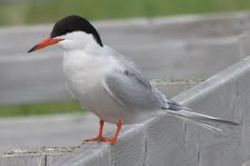On Jan. 3, Emerald Isle resident Jim Craig will be trampling around out-doors, somewhere in the vicinity of Camp Lejeune near Jacksonville, looking for birds and probably snapping photos of some of the ones he sees.
Those are not, by any means, unusual pastimes for Craig, a geology professor emeritus at Virginia Tech University and an avid amateur ornithologist who writes the weekly “Notes from Nature” column for the Tideland News, a weekly newspaper in Swansboro. But on that particular Thursday, Craig will be part of a much bigger picture: He’ll not only be viewing and photographing his avian friends and acquaintances, he’ll also be counting them as part of the National Audubon Society’s annual Christmas Bird Count.
Supporter Spotlight
 Walker Golder |
 Jim Craig |
According to Walker Golder, deputy state director for Audubon North Carolina, thousands of others will be involved in the count, which runs from Friday through Jan. 5 at various locations throughout the state, the nation and much of the world.
“It’s a lot of fun, a great social event and yet it’s very important,” Golder said. “The Christmas Bird Count is one of the longest-running bird monitoring programs in the world. It’s been going on since 1900. And what it does is give us a snapshot of the diversity and abundance of birds in specific areas and in the country.”
The first counts in North Carolina will begin Friday in some locations, and will get under way in the coastal region on Saturday in Kitty Hawk and Sunday in Morehead City. Other coastal counts are scheduled for Dec. 27 at Cape Hatteras, Dec. 29 at Lake Mattamuskeet, Dec. 30 on Portsmouth Island, Dec. 31 on Ocracoke Island, Jan 4 in Southport and Bald Head Island and Jan. 5 in Wilmington.
If counting birds and playing a key role in understanding the trends in the world of our beautiful feathered friends are things you’ve always wanted to do but have put off, there’s no excuse this year: For the first time in decades, there’s no $5 fee to participate in the Christmas count. Click here to find a count in your area and to sign up. Either call the leader or click on the email address to send a message.
Craig has been involved in the bird count for close to 30 years, the first 24 in Blacksburg, Va., where he was a professor at Virginia Tech, and the last three on the Crystal Coast.
Supporter Spotlight
“It gives you a chance to see birds you might normally see, in places you might not normally go,” said Craig, who added that many geolo-gists, by nature, also become birders. “You expect to see the normal ducks and woodpeckers and nuthatches. But you almost always see something unexpected.
“For example, two years ago, just as I was finishing up, I saw a wood-cock. I hadn’t seen one in 15 or 20 years. And there’s a pretty good chance to see eagles and ospreys and harriers (both the military and the avian versions of the last two).”
The count in Morehead City last year was typical. Thirty-six people par-ticipated on a day when the temperature ranged from 38 to 44 de-grees. Those intrepid counters put in 131 hours and identified 156 species.
The most numerous bird was – no surprise – the starling, at 1,884, and the ubiquitous ring-billed gull was next, at 1,637. There were nine bald eagles, three piping plovers and zero, not one, black skimmer, despite it being the namesake for a street in Emerald Isle. Nor was there a par-tridge, in a pear tree or elsewhere.
 Common grackle |
 Little blue heron |
 Eastern meadowlark |
 Field sparrow |
 Common tern Birds in TroubleThese birds are either permanent residents of the N.C. coast or are common winter or summer visitors. They are also on the National Audubon Society’s list of Common Birds in Decline. The annual Christmas Bird Counts and other data show that the 20 birds on the national list lost at least half their populations in just four decades. Some species nose-dived as much as 80 percent. The findings point to serious problems with both local habitats and national environmental trends. |
The numbers, Golder said, are considered accurate, both within indi-vidual count circles and in total, and the count is well-respected; many count leaders do it year after year, bringing a high degree of dedication and professionalism to a task that results in data that are useful to scientists and, on occasion, to public policy-makers. The counts have influenced Congressional decisions.
“This is not just about counting birds,” Dr. Gary Langham, Audubon’s chief scientist, emphasized in a news release about this year’s count. “Data from the Audubon Christmas Bird Count are at the heart of hun-dreds peer-reviewed scientific studies and inform decisions by the U.S. Fish and Wildlife Service, the Department of the Interior, and the EPA.
“Because birds are early indicators of environmental threats to habitats we share, this is a vital survey of North America and, increasingly, the Western Hemisphere.”
Indeed, Golder said, one thing that experts are watching closely is whether global climate change will affect the ranges of birds. The key is that the count looks at the same areas each year, and the data set is very long.
“I have not analyzed the data for that myself, but I know there are peo-ple who are looking specifically for shifts related to climate change,” he said.
It does appear, he said, that more hummingbirds are staying in North Carolina through the winter.
Another noticeable trend, he said, is an increase in the number of bald eagles in the area. That mirrors the recovery of the bird, the very sym-bol of the nation, which had been on the Endangered Species List until 2007.
Another change in recent years, Golder said, has been a significant in-crease in counts of the Eurasian collared dove. The collared dove was introduced into the Bahamas in the 1970s and spread from there to Florida in the early 1980s. It’s now being seen all the way west to Cali-fornia and as far north as the Great Lakes, Nova Scotia and Alaska.
Birds, of course, are marvelously adaptive; the starling, among the most numerous species in America, is itself an invasive species, from Europe.
Audubon officials say the Christmas count also has helped reveal seri-ous declines in some species, including the Northern Bobwhite quail, and has aided in the comeback of some waterfowl, as conservation measures began or intensified after poor numbers in counts.
Craig, like Golder, said that the counts involve everyone from newbies, who know next to nothing about birding and might not recognize a common bluebird, to experts like John Fussell, an author of a definitive bird guide who leads the count in Morehead City. It’s serious science all the same, Craig said.
“It’s true that it’s a one-day snapshot, but it’s a snapshot that has been taken for 112 years now,” he said. “When you line up all of those ‘snap-shots’ of more or less the same places … you are able to get a pretty clear picture of a lot of things, like species that are on the increase or in decline.
“It’s ‘flawed’ science – all science is flawed – but it does a lot to increase our understanding of birds and habitat,” Craig continued.
The Christmas count, Craig said, also brings in new birders each year, and they become new “citizen-scientists” who become dedicated stakeholders with personal investments in preserving and protecting not just birds, but the natural habitats of the region. They learn quickly.
Golder said it’s not too late to get involved, as count circle leaders will accept volunteers literally until the last minute. Those who want to participate in the count do not need any training or any special skills. Nor do they have to be particularly physically fit.
“It can be as easy as a walk down the beach,” he said. “Or you could be in the marsh or the forest, or in the urban setting. There will be people on the water in boats, inshore and in the near-shore ocean.”
Generally, there’s something for everybody, and the count leader will work to make sure a person is assigned to an area he is capable of handling comfortably.
There are also safeguards, Golder said, to ensure the counts are as ac-curate as possible. The count leader looks at all the data before turning it in and will question anything that looks out of the ordinary. For example, if someone in Carteret County noted 50 black skimmers when there had been none the previous year, that would raise a flag. So would a precipitous decline in a common species or a sudden appearance of a species far out of its normal range. Once the count leader turns in his or her report, that data is similarly reviewed on the station and national levels.
All of the data is publicly available on the Audubon website, and is used daily by countless researchers, including those in government.
In 2007, the data were instrumental in the development of two Audubon State of the Birds Reports: Common Birds in Decline, which revealed that some of America’s most beloved and familiar birds have taken a nosedive over the past 40 years; and WatchList 2007, which identified 178 rare species in the continental U.S. and 39 in Hawaii that are imperiled.








